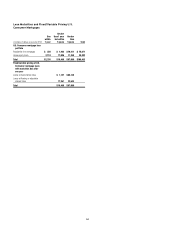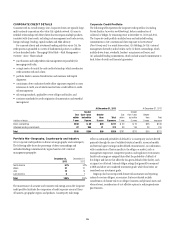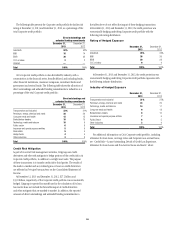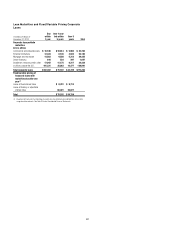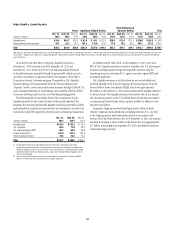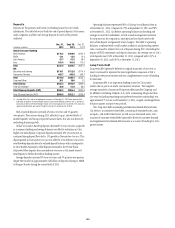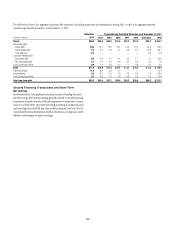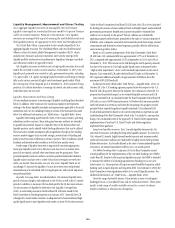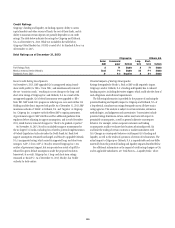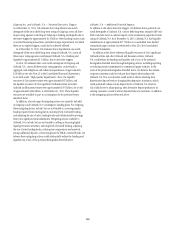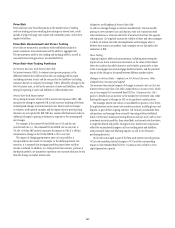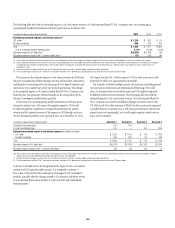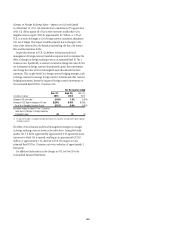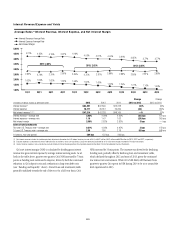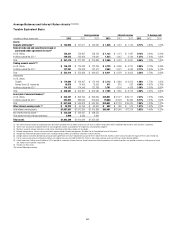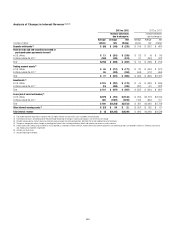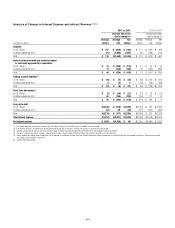Citibank 2013 Annual Report Download - page 122
Download and view the complete annual report
Please find page 122 of the 2013 Citibank annual report below. You can navigate through the pages in the report by either clicking on the pages listed below, or by using the keyword search tool below to find specific information within the annual report.104
Liquidity Management, Measurement and Stress Testing
Citi’s aggregate liquidity resources are managed by the Citi Treasurer.
Liquidity is managed via a centralized treasury model by Corporate Treasury
and by in-country treasurers. Pursuant to this structure, Citi’s liquidity
resources are managed with a goal of ensuring the asset/liability match and
that liquidity positions are appropriate in every entity and throughout Citi.
Citi’s Chief Risk Officer is responsible for the overall risk profile of Citi’s
aggregate liquidity resources. The Chief Risk Officer and Citi’s Chief Financial
Officer co-chair Citi’s Asset Liability Management Committee (ALCO), which
includes Citi’s Treasurer and senior executives. ALCO sets the strategy of the
liquidity portfolio and monitors its performance. Significant changes to portfolio
asset allocations need to be approved by ALCO.
Citi’s liquidity resources are held in cash or high-quality securities that could
readily be converted to cash in a stress situation. At December 31, 2013, Citi’s
liquidity pool primarily was invested in cash; government securities, including
U.S. agency debt, U.S. agency mortgage-backed securities and foreign sovereign
debt; and a certain amount of highly rated investment-grade credits. While
the vast majority of Citi’s liquidity pool at December 31, 2013 consisted of long
positions, Citi utilizes derivatives to manage its interest rate and currency risks;
credit derivatives are not used.
Liquidity Measurement and Stress Testing
Citi uses multiple measures in monitoring its liquidity, including those described
below. In addition, there continue to be numerous regulatory developments
relating to the future liquidity standards and requirements applicable to financial
institutions such as Citi, including relating to certain of the measures discussed
below. For additional information, see “Risk Factors—Liquidity Risks” above.
Liquidity stress testing is performed for each of Citi’s major entities, operating
subsidiaries and/or countries. Stress testing and scenario analyses are intended
to quantify the potential impact of a liquidity event on the balance sheet and
liquidity position, and to identify viable funding alternatives that can be utilized.
These scenarios include assumptions about significant changes in key funding
sources, market triggers (such as credit ratings), potential uses of funding and
political and economic conditions in certain countries. These conditions include
standard and stressed market conditions as well as firm-specific events.
A wide range of liquidity stress tests is important for monitoring purposes.
Some span liquidity events over a full year, some may cover an intense stress
period of one month, and still other time frames may be appropriate. These
potential liquidity events are useful to ascertain potential mismatches between
liquidity sources and uses over a variety of horizons (overnight, one week, two
weeks, one month, three months, one year, two years). Liquidity limits are set
accordingly. To monitor the liquidity of a unit, those stress tests and potential
mismatches may be calculated with varying frequencies, with several important
tests performed daily.
Liquidity Coverage Ratio. As indicated above, Citi measures liquidity stress
periods of various lengths, with emphasis on the 30-day, as well as the 12-month
periods. In addition to measures Citi has developed for the 30-day stress scenario,
Citi also monitors its liquidity by reference to the Liquidity Coverage Ratio
(LCR), as calculated pursuant to the final Basel III LCR rules issued by the
Basel Committee on Banking Supervision in January 2013. Generally, the LCR
is designed to ensure banks maintain an adequate level of unencumbered high-
quality liquid assets to meet liquidity needs under an acute 30-day stress scenario.
Under the Basel Committee’s final Basel III LCR rules, the LCR is to be calculated
by dividing the amount of unencumbered cash and highly liquid, unencumbered
government, government-backed and corporate securities by estimated net
outflows over a stressed 30-day period. The net outflows are calculated by
applying assumed outflow factors, prescribed in the rules, to various categories of
liabilities, such as deposits, unsecured and secured wholesale borrowings, unused
commitments and derivatives-related exposures, partially offset by inflows from
assets maturing within 30 days.
Based on Citi’s current interpretation of the Basel Committee’s final Basel
III LCR rules, Citi’s estimated LCR was approximately 117% as of December 31,
2013, compared with approximately 113% at September 30, 2013 and 116% at
December 31, 2012. The increase in the LCR during the fourth quarter primarily
was due to the increase in Citi’s high-quality liquid assets, as discussed under
“High Quality Liquid Assets” above, and continued improvement in the mix of
deposits. Citi’s estimated LCR under the final Basel III rules as of December 31,
2013 represents additional liquidity of approximately $62 billion above the
minimum 100% LCR threshold.
As discussed in more detail under “Risk Factors—Liquidity Risks” above, in
October 2013, the U.S. banking agencies proposed rules with respect to the U.S.
Basel III LCR. Along with others in the industry, Citi continues to review the U.S.
proposal and its potential impact on its estimated liquidity resources and LCR.
Citi’s estimated LCR, as calculated under the Basel Committee’s final Basel III
LCR rules, is a non-GAAP financial measure. Citi believes this measure provides
useful information to investors and others by measuring Citi’s progress toward
potential future expected regulatory liquidity standards. Citi’s estimated LCR
for all periods presented is based on its current interpretation, expectations and
understanding of the Basel Committee’s final rules. It is subject to, among other
things, Citi’s continued review of the proposed U.S. Basel III LCR requirements,
implementation of any final U.S. Basel III rules and further regulatory
implementation guidance.
Long-term liquidity measure. For 12-month liquidity stress periods, Citi
uses several measures, including the long-term liquidity measure. It is based on
Citi’s internal 12-month, highly stressed market scenario and assumes market,
credit and economic conditions are moderately to highly stressed with potential
further deterioration. It is broadly defined as the ratio of unencumbered liquidity
resources to net stressed cumulative outflows over a 12-month period.
Net Stable Funding Ratio. In January 2014, the Basel Committee issued
revised guidelines for the implementation of the net stable funding ratio (NSFR)
under Basel III. Similar to the long-term liquidity measure, the NSFR is intended
to measure the stability of a banking organization’s funding over a one-year
time horizon (i.e., the proportion of long-term assets funded by long-term, stable
funding, such as equity, deposits and long-term debt). Citi continues to review the
Basel Committee’s revised guidelines relative to its overall liquidity position. For
additional information, see “Risk Factors—Liquidity Risks” above.
Given the range of potential stresses, Citi maintains a series of contingency
funding plans on a consolidated basis and for individual entities. These plans
specify a wide range of readily available actions for a variety of adverse
market conditions or idiosyncratic disruptions.


